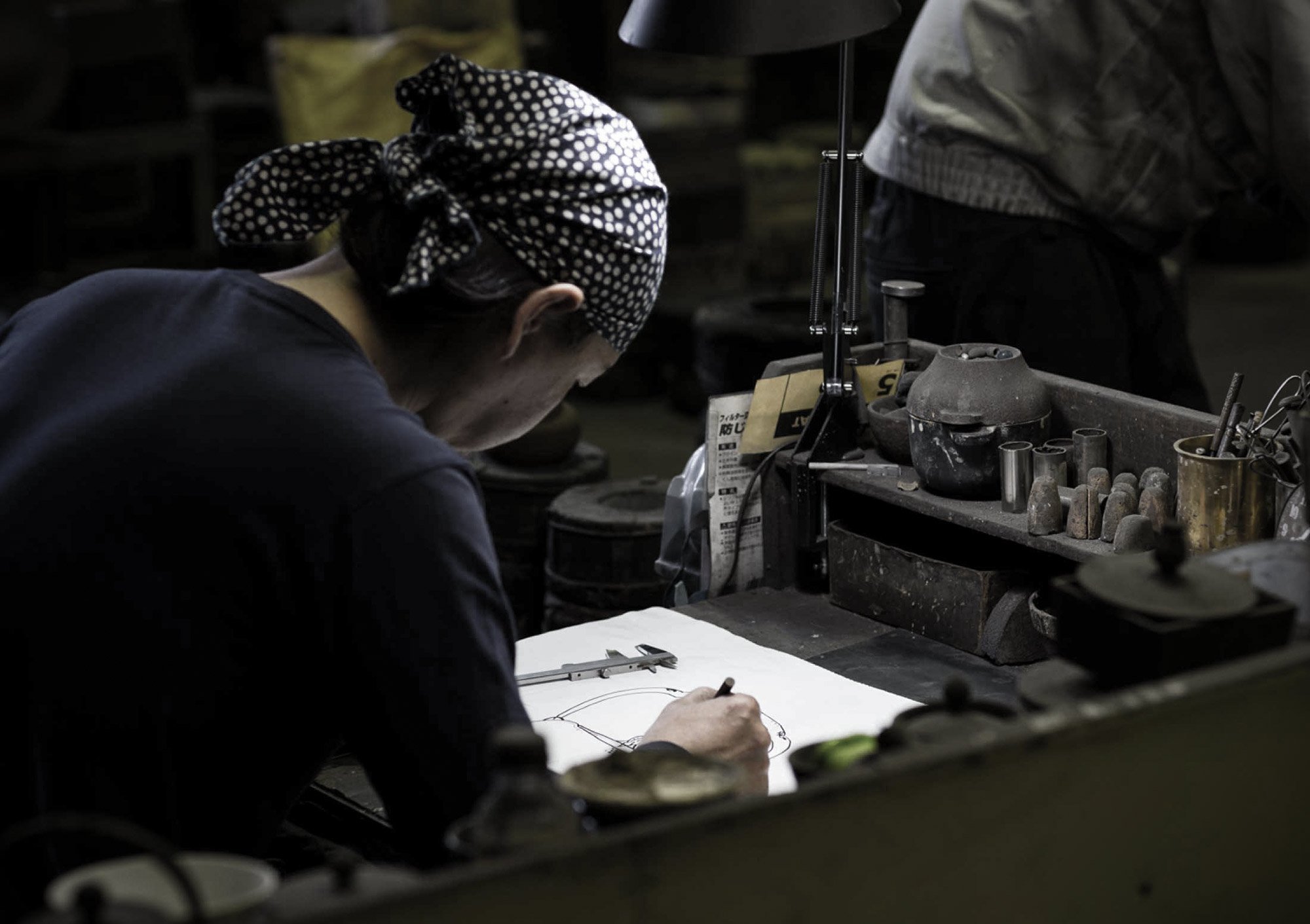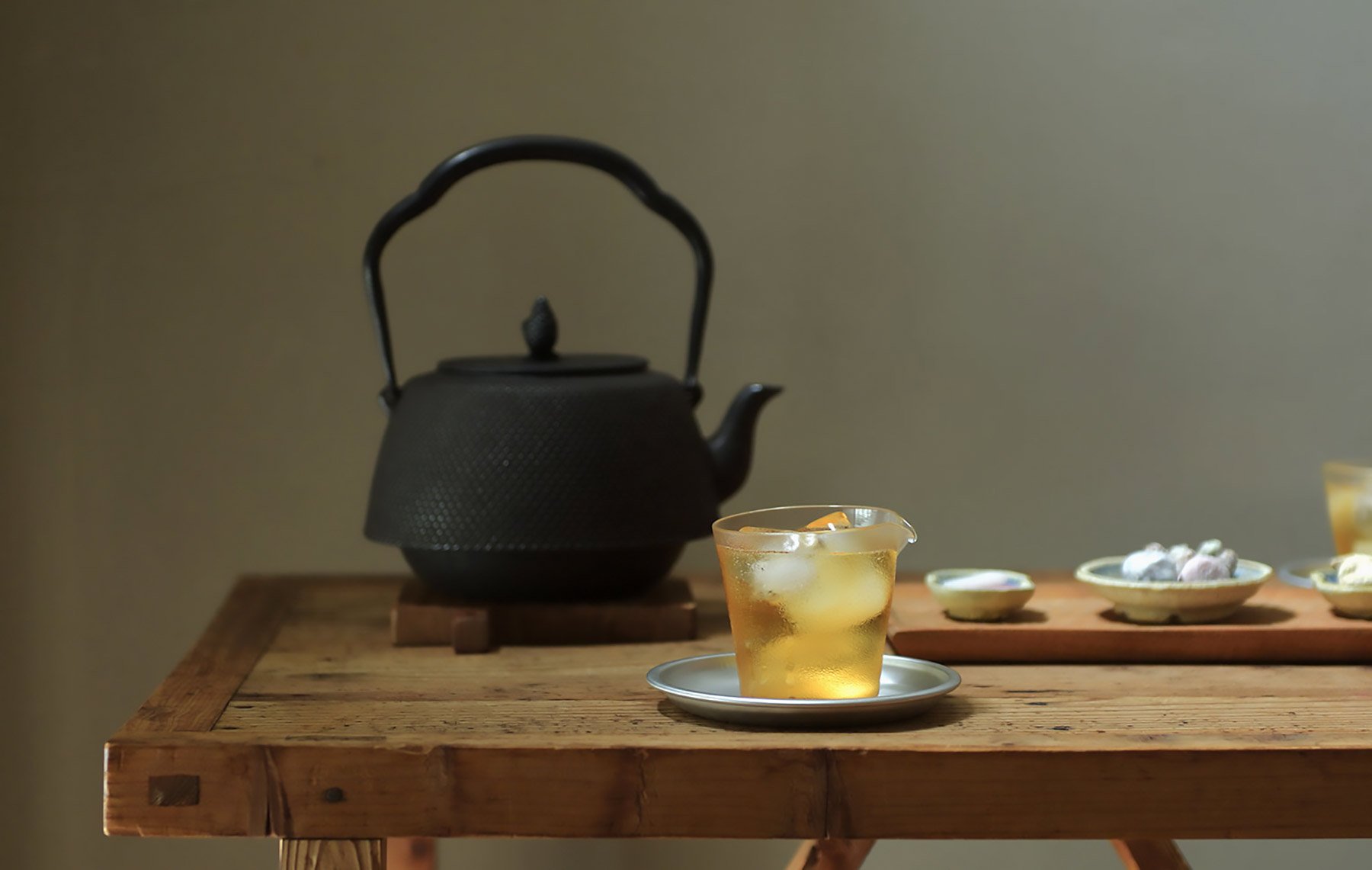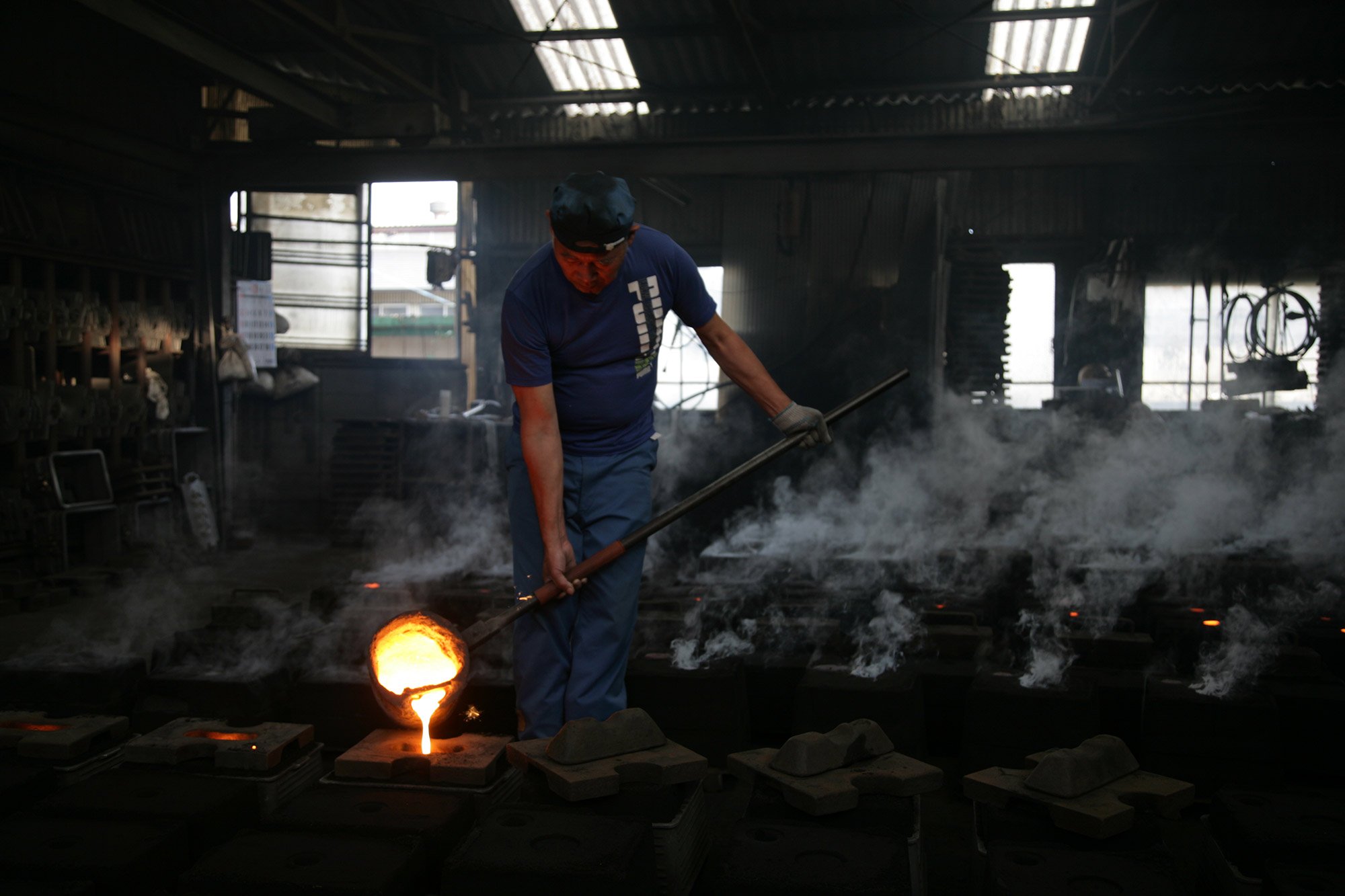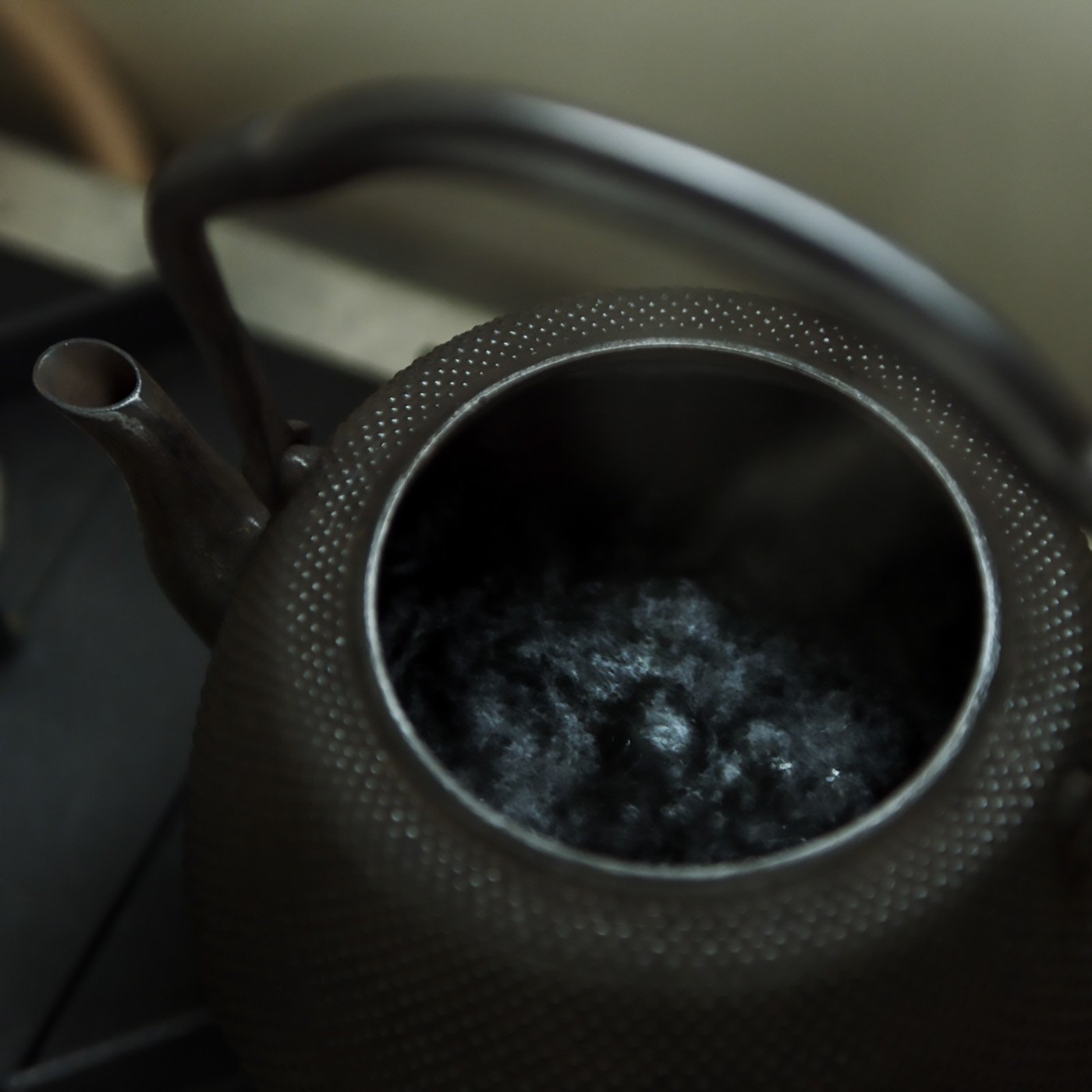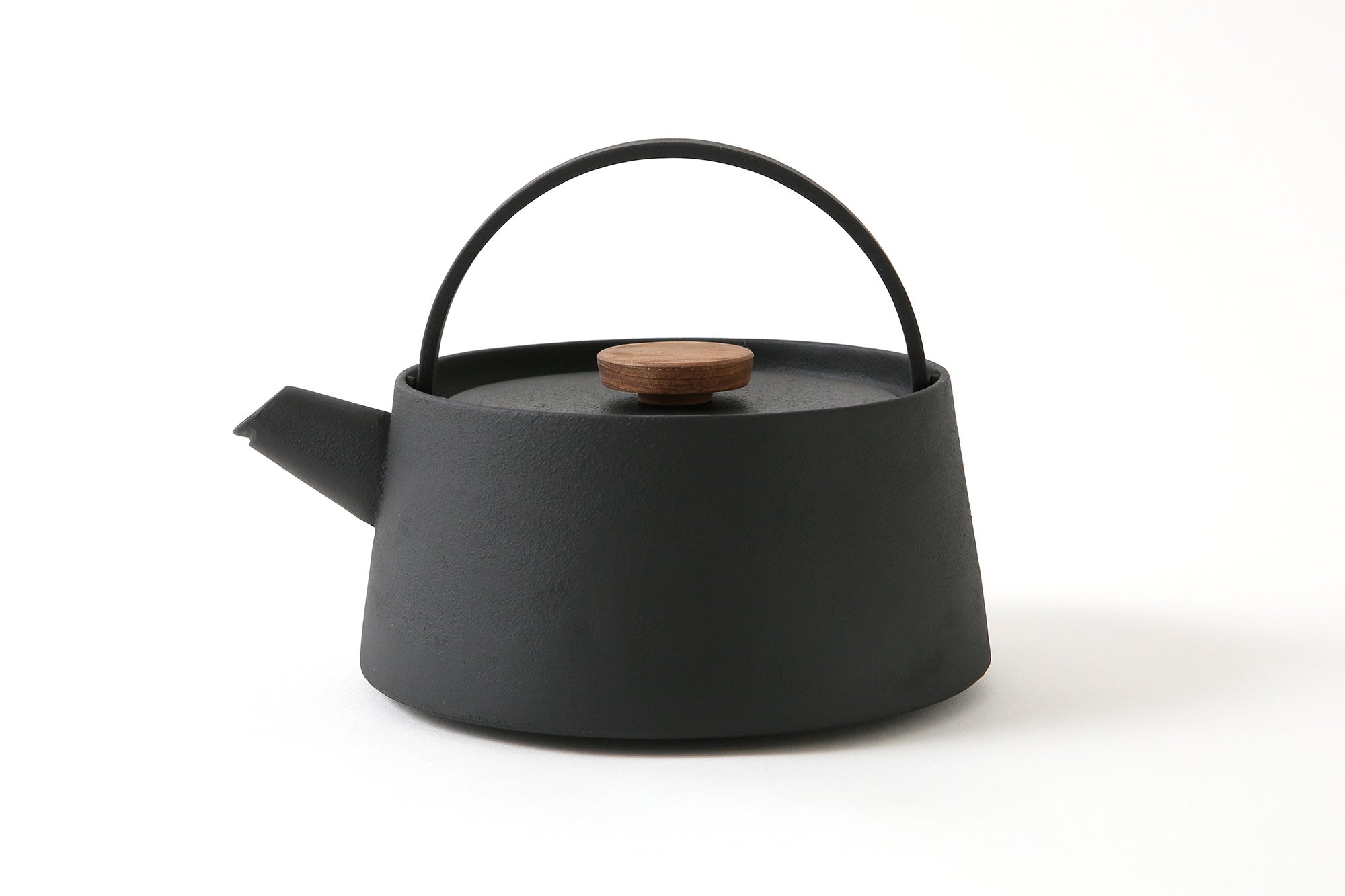All you need to know about the Japanese cast iron teapot.
Embraced by foodies, professional chefs and amateur cooks alike, cast iron pots, pans, and kettles have become increasingly more popular over the past few years. Everyone seems to have at least one cast iron item they swear by and use frequently, despite the somewhat intimidating (for cast iron novices, that is) seasoning process and maintenance requirements. Plus, there are many designs to choose from: fish pans, the Japanese cast iron teapot, Dutch ovens, sauce pans, large pots – you name it.
With a history that dates back hundreds of years in Eastern countries, cast iron vessels also bring an old time charm to modern living spaces. Yet one design in particular has stood out among the others: the Japanese cast iron teapot. Used in the tea ceremony, this type of teapot is made specifically for the boiling of the water. Not tea brewing, just water boiling. This transforms a small iron object into a veritable symbol of mindfulness. It’s the epitome of “slow living”, and it’s also crafted to last a lifetime.
The tetsubin is the epitome of a traditional tea ceremony, of the process of brewing tea slowly, in a ritual that demands patience and care.
History
Named “tetsubin” in Japanese, this type of teapot goes back to the 17th-century. Made in Morioka city and Mizusawa city, both in the Iwate prefecture, the kettle is part of the Nambu Tekki category of ironware, which refers to all cast iron products crafted in the former Nambu area. Nambu Tekki itself has origins in the Nambu Kama kettles and ironware, which date back to the Sengoku period, which lasted between 1467 and 1600. Even today, these teapots are almost exclusively crafted in the Iwate prefecture by skilled artisans who use the same traditional techniques.
While crafted in Japan for hundreds of years, the tetsubin cast iron teapot didn’t become popular until the 18th and 19th centuries, its demand growing over the years up until the start of WWII. The designs from this era vary from minimalist and pared-down to intricately decorated. The latter category includes kettles with ornaments in high relief as well as teapots with gold or bronze inlays. Some of these designs have been included in museum and private collections, albeit in a limited number. This is due to the fact that the teapots were – and still are – crafted on a relatively small scale by master artisans.
In the late ‘90s, a new type of design, created specially for the European and Western markets, introduced brighter colors. As some workshops began collaborations with international designers, the traditional tetsubin entered a new chapter and became a sought-after product throughout the world.
The Appeal of the Japanese Cast Iron Teapot
Unlike any other types of kettles, tea lovers use a tetsubin only for boiling the water for the tea ceremony. The interior of the vessel is left uncoated. Put more simply, if your cast iron kettle has an enamel finish on the interior, it’s not a true tetsubin. The “raw” surface of these traditional Japanese teapots allows the iron to seep through into the water during the boiling process. This changes the taste of the water and ultimately makes tea mellower and sweeter.
Tea made with boiling water from a tetsubin cast iron teapot also tastes richer and less bitter, offering a smoother flavor. Apart from the taste, tetsubin users also reap the health benefits of getting a free iron supplement with every cup of tea. Of course, you can also use your Japanese cast iron teapot to boil water for coffee. Different types of teapots provide a subtly different water taste. Depending on the composition or the raw materials, the techniques used to craft the teapot, and the porosity of the cast iron, each tetsubin is one-of-a-kind and has a specific effect on the taste of water and the resulting cup of tea. The cast iron build also helps to maintain the water hot for a longer period of time.
We left the best for last. You only buy a Japanese cast iron teapot if you really love tea and if you don’t mind putting in a bit of effort to make a cup. After all, the tetsubin is the epitome of a traditional tea ceremony, of the process of brewing tea slowly, in a ritual that demands patience and care. You’re required to pay attention to every step, from filling the pot with water and bringing the teapot to place on a trivet, and to enjoy the process just as much as you delight in the result. A tetsubin is quintessential “slow living.” It gives the tea making routine the solemnity of an ancient ritual. At the same time, this process brings mindfulness to an ordinary, everyday activity, making every cup of tea special.
The Crafting Process
To even gain the title of “traditional craftsman”, the artisans have to train for ten years. Every tetsubin is crafted by hand through a process that involves many steps. First, the craftsmen make sand, clay, or dry molds by hand, shaping the material and adding ornamental work. A time consuming process, this stage helps to create the products’ distinctive patterns. Designs range from the Arare dot pattern to the Hada texture and the intricate animal or floral motifs. Then, the craftsmen pour molten iron into the molds. Traditionally, high-end Japanese cast iron teapots will feature a clay mold, while the sand molds suit everyday use kettles, exports, and time-efficient manufacturing.
To make each teapot, the craftsmen bring together several components: the external and internal molds as well as the molds for the spout, lid and lid knob. Designed to minimize overheating, the handles feature a thinner piece of forged iron which may be hollow or solid. Either way, the handle will never get hot during the water boiling process.
After the iron has cooled down, the artisans remove the mold and begin the next process. Baked in a charcoal fire, the teapots become “activated” as the fire removes the oxygen from the surface of the cast iron. This crucial stage makes all the difference between a simple iron kettle and a real tetsubin, as the porous surface of the teapot has the ability to change the composition of the water. The teapots also change color, becoming blueish gray.
The finishing of the teapots involves heating up the cast iron to a certain temperature and applying a natural lacquer coating made from the sap of the Urushi tree. Polishing the lacquer on the embossed surfaces adds the last finishing touch. This step also creates a contrast between the matte surface of the “raw” iron interior and the glossy accents on the exterior.
The crafting process of each Japanese cast iron teapot, when completed entirely by hand, lasts about a week. As a result, some of these teapots may have a steeper price, but ultimately you do get what you pay for. Modern technology, such as the use of electric smelting devices, has allowed workshops to speed up the manufacturing process while still preserving that artisan build and the handcrafted label.
The Rules of Using a Japanese Cast Iron Teapot
When using a tetsubin cast iron teapot for the first time, you should boil water and throw it out, repeating the process for a few times. This removes the odor from a new teapot. If this step fails to eliminate the scent of the cast iron teapot completely, place a few tea leaves or ginger in the boiling water. You can use a tea infuser, too. These natural ingredients have antioxidant properties and protect the iron surface while removing that new cast iron kettle odor.
One of the most important rules to remember? Never heat an empty tetsubin, as you may damage the teapot and even cause cracks to appear. When boiling several batches of water, you should always leave a small amount of hot water inside the teapot before adding extra cold water. Adding cold water to a hot teapot will cause the cast iron to shrink and then crack.
While traditionally used with charcoal fires that didn’t create moisture and thus make rust appear on the exterior, these days tea aficionados have to settle for stove tops. Gas and induction stoves are safe to use, but for the latter you should keep the heat to a lower setting to protect the kettle for long-term use. If heated with intense heat on an induction stove, a tetsubin may become brittle over time and even crack. Using these modern heating sources also creates water vapor, which leads to rust on the bottom of the teapot. This is completely normal. However, if you want to remove the exterior rust for aesthetic reasons or if there’s too much build-up, you can use green tea which will also darken the color of your kettle.
Finally, you should never leave water in your kettle for a longer period of time, as this may cause rust to develop on the interior of your teapot. Should that happen, don’t worry, we have a solution for you in the next section.
Maintenance
After weeks of use, all Japanese cast iron teapots develop red and white spots. These are minerals from the surface of the cast iron and from the build-up of calcium carbonate caused by use. Neither of them should be removed, as they contribute to the specific taste of the water and they also prevent rust.
Speaking of rust, your cast iron teapot WILL develop rust in time and with use. Using water from a rusted iron kettle is safe for consumption. In Japan, some traditional recipes even include the addition of a rusted nail to add more color to dishes. But you should remove rust when it accumulates, as it will eventually weaken the cast iron and reduce the durability of your teapot. To safely remove rust from cast iron kettles, boil green oolong tea or green tea leaves in water or in a tea infuser and leave the concoction to cool off in the teapot. These natural antioxidants will reduce the rust and will give the interior a darker color.
Never use coarse sponges or detergents to clean your kettle, as you may damage your Japanese cast iron teapot. For external rust, you can use a soft cloth and liquid green tea. You can also use this process to rejuvenate the glossy surface of the lacquer finish and keep your teapot looking like new.
With proper care, a tetsubin can last for a lifetime. In truth, these teapots are also meant to become heirlooms, to be passed from one generation to the next.
Available Styles and Designs
In the past, two main workshops produced the majority of Japanese cast iron teapots: Kibun-Do and Ryumon-Do. Intricate and often highly ornamented, these antique teapots look like works of art. If you want to own one, you need to search a bit – and have a larger sum to spare – as they are usually only available at auction.
More recently, workshops in the Iwate prefecture have begun collaborating with international designers to create a new generation of tetsubin products.
Some designers like Hisanori Masuda have also produced ironware and cast iron teapots themselves. Hisanori Masuda founded the Chushin Kobo workshop for this purpose, making a range of products with traditional methods but a contemporary design. Among the Chushin Kobo collection you can find the “Hiratsubo” design, which pays homage to tradition yet looks at home in modern interiors. The company’s range also includes kettles with simple wood handles, which add a subtle Nordic feel to the minimalist Japanese design. Other Chushin Kobo teapots feature details inspired by Japanese history and ancient crest motifs.
Established in 1902 in the Iwate prefecture, Iwachu has become a leader in Nambu Tekki cast iron teapot production. The company has been making traditional cast iron products and teapots since the beginning, but has become well-known around the world thanks to a range of vibrant teapots. In 1996, a Paris-based specialty tea shop made a special inquiry, requesting kettles in brighter hues that contrasted the classic black or brown teapots. After three years of research and testing, Iwachu began producing blue, red, orange, and green kettles that became incredibly popular throughout Europe. The company now sells its products around the world, from China and Asia to the US.
Iwachu’s tetsubin designs include the aforementioned vibrant kettles as well as more traditional options. In the latter category, you can buy a teapot with a classic dot pattern, painstakingly applied by hand with extreme precision. Vintage style designs are also available, including teapots with ornaments and a black and gold color with an antique-style patina.
Regardless of your choice, getting a traditional Japanese cast iron teapot will completely change the way you think about tea. It may make you re-discover the joy of drinking tea, all over again. And it may even remind you why you’ll always be a tea lover.
What is a Japanese cast iron teapot called?
The Japanese cast iron kettle is called tetsubin. Used to boil water for tea and for tea brewing, it features a lid, top handle and a pouring spout. Another cast iron teapot used in the traditional Japanese tea ceremony is the tetsu-kyusu. However, this type of teapot is not suitable for boiling water, as it has an enameled interior. Some modern cast iron teapots also come with a removable strainer or stainless steel infuser for loose leaf tea brewing.
Do Japanese use cast iron teapots?
The Japanese have been using cast iron teapots since the 17th century, with their popularity growing throughout the 19th century. Originally made in Japan in the Iwate prefecture, classic cast iron tea kettles are still crafted there by artisans who use traditional techniques they have honed over many years of training.
Can you put Japanese cast iron teapot on stove?
Yes, you can use a Japanese tetsubin on a gas or induction stove. However, keep in mind that with an induction stove, you need to lower the heat to protect the teapot over time and prevent the cast iron from becoming brittle due to high heat.
Are cast iron teapots healthy?
Cast iron teapots are healthy as they are non-toxic and safe to use for many years. Over time, every Japanese cast iron kettle will develop rust, but this is completely normal. You can remove the rust by boiling green tea inside the teapot.
What is the difference between a Japanese cast iron teapot and a regular cast iron teapot?
A traditional Japanese tetsubin is made using traditional techniques. Authentic Nambu ironware is still crafted in the Iwate prefecture, in limited series and by master artisans – hence their higher price tag. A regular cast iron teapot may or may not have an enameled interior, and can feature wood accents, for example on the lid. Enameled teapots often come with a stainless steel infuser or a strainer.
Why are cast iron teapots better than other pots?
Many tea fanatics and Japanese tea lovers prefer using a cast iron tea kettle because it gives the water a distinct flavor and thus enhances the natural aroma of tea for a smoother taste. The water also remains hotter for longer as the cast iron is excellent at retaining heat. Ultimately, a cast iron kettle gives a deeper flavor to the tea making ritual, in more ways than one.
Is cast iron teapot good for tea?
Many tea lovers would say that a cast iron teapot is the best for tea. As the water boils, the kettle infuses it with iron, giving the tea a smoother, sweeter and more flavorful taste. For a tea fan, it’s probably one of the most inspired gift ideas. You can find designs with or without a tea infuser and with more traditional or modern styles.
How do you clean a Japanese cast iron teapot?
Japanese cast iron teapots require little maintenance. After each use, simply rinse the pot with warm water and leave to dry. You can wipe the exterior with a clean cloth. You should never use any soap or detergent to clean the kettle – only water.
What is the size of a cast iron teapot?
The size of a cast iron Japanese tetsubin varies. Many teapots have a capacity of 24 oz, which is enough for 4-5 tea cups. Others can hold up to 54 or 60 oz of water. Some are intentionally designed to hold water for only 2 cups.



